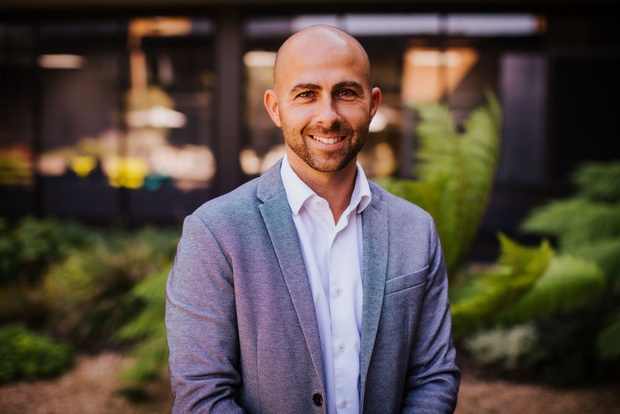“It will be slow and painful and potentially incorrect a lot of the time,” Reddy, a former UK maths teacher and school leader, tells EducationHQ.
It was almost two decades ago that Reddy “fell in love” with the idea that he could do something to change children’s perception of maths – and their perception of their own ability with it.
At the time Reddy had signed up to Teach First, England’s answer to our Teach For Australia program, and from day one the thought stuck.
“I thought, ‘I may not be able to get them all the best grades, but what I can do is hopefully make them feel positive about themselves and their attitude towards maths, [so] they leave school saying, ‘I’m good at maths’,” he recalls.
After a joyous stint in the classroom punctured by a brief foray into engineering, Reddy, by now sorely missing teaching, opened up his own high school in London, King Solomon Academy, alongside a group of friends.
The year was 2009, and the educator seized the opportunity to “do things differently”.
“We put the school in an area of high deprivation, there’s a lot of disadvantage in London,” Reddy says.
“And so we rewrote the script, I think, on many things – we made sure that behaviour and culture was our number one, then we made sure that everybody was consistent with that.
“So, children felt incredibly safe, they came from very turbulent home lives. And what we wanted to do was to provide them somewhere safe and joyful, and inspire them to actually tap into their natural inclination – all children want to learn.”
In his Year 7 maths classes however, Reddy struck a huge problem.
“I identified the kids were being held back by missing basic knowledge of maths,” he recalls.
With no one in a position to tell him otherwise, Reddy began to dedicate the beginning of every lesson to times tables practice.
“I wanted to give it a name and a vibe, so I called it ‘Times Tables Rock Stars’ and played rock music while they completed the sheet each day.
“And I spent time just figuring out what’s going to make it really successful from a pedagogical point of view, what’s going to work to make them learn times tables, not just the fun part...” he explains.
The move proved a sound one, and Reddy’s students started to taste success for the first time.
“My schools’ students became the highest performing students in England, coming from a non-selective school…
“I rolled out the times tables practice on paper with three successive cohorts of Year 7s, and then one student said, ‘why don't you turn it into an app or website we can play on?' the educator reflects.
“So, during my summer holidays, I hired – using my teacher salary – an illustrator and a coder/developer to build me a web version of this platform.
“I brought it to the kids in the Autumn term, and they loved it.”

“You can't expect children to learn times tables though osmosis, through just kind of doing other maths practice,” Reddy says.
Figuring other teachers were up against similar maths challenges, Reddy offered up the online program to local high schools.
The uptake grew and grew, with the educator eventually forced to quit his teaching job in order to service demand.
“Tomorrow we will be up to 20 people working for Maths Circle, we’re in 120 countries, we’ve over a million children a week using the platform,” Reddy, CEO of the company, says.
Last week Reddy was awarded an OBE for his services to education, a recognition he says he’s “very humbled and honoured” to have received.
“You can’t expect children to learn times tables though osmosis, through just kind of doing other maths practice,” he says.
“Times tables need to be explicitly taught and practised, and, to be really effective, it’s not just about speedy recall, you need students to understand the concepts underpinning and relationships between the tables.
“Multiplicative thinking is connected to so much maths … all the way through primary school and high school – if you don't have that knowledge at the tip of your fingers, it will be like trying to read without being able to decode.”
Reddy is heartened by the movement towards evidence-based maths practice in Australia and says people are now starting to question if, as has been the case with literacy, there is a science behind what teaching approach works best.
“It’s been very exciting for me, as someone from outside Australia, to be learning from the different groups in Australia who are really championing it,” Reddy says.
“For example, on Saturday, I was speaking at a grassroots teacher conference called the What Works Series at Templestowe Heights Primary in Melbourne. It was all about successful approaches to teaching maths.
“There was a great show of people who gave up their time on Saturday and had travelled, in some cases, for a number of hours to go to the workshops.”
Reddy predicts that maths will soon form the focus of wider education reform.
“I think maths will come next, in a way people’s attention has rightly been on reading and phonics.
“And now they’re asking exactly the same question, saying ‘well is there a science of maths? Is there a ‘phonics’ of maths? Are there similar principles that we can [learn] from?’”
A recent research report has flagged that some 400,000 Australian students per year – or 10 per cent of all schoolchildren – need additional support or are below the international benchmark in maths.
More than one quarter of 15-year-olds are low performers in the subject, according to international testing results.
Reddy says when it comes to bettering maths outcomes, “postcodes mean nothing”.
“The quality of maths education means everything: aspirations, mindset, and cracking the basic maths,” he adds.
“My belief is that all children can learn times tables. For some, they just might need more time … give every child the time or what it takes for them to learn the times tables, because there’s so much maths that sits on top.”














